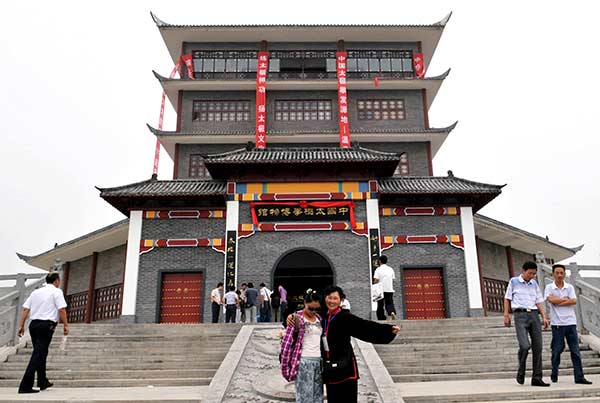 |
| Tourists pose in front of the village's tai chi museum, which has about 3,000 cultural relics on display, in 2009. [Photo by Yang Fan / for China Daily] |
While the farming village with a population of 2,700 chiefly grows wheat and corn, its biggest recent harvest has been the income generated by its rich tai chi culture.
Chenjiagou at one time was a village of great hardship, poverty and struggle. Its fortunes began changing in the early 1980s, when a group of Japanese visitors was so impressed by the village's traditional tai chi, created in the 1600s by Chen Wangting, that they went home and began spreading the word about the little-known place.
"The small village then became famous very quickly," said Chen Zhenglei. "This aroused the government's attention, and in the past 10 years Chenjiagou has developed the fastest." He said private investment is lining up to assist with carrying out development plans for the village.
Tai chi Grandmaster Chen Xiaoxing, age 62, remembers well what the village was like just before its rise to fame. Chen, the younger brother of Chen Xiaowang, has long run a tai chi school just inside the village's main gate that is popular among locals and foreigners alike.
"Before 1981, this area was tombs and farm fields, but mostly vacant land," Chen said. "There has really been a lot of change."
In 1981, with the help of the local government, Chen Xiaoxing built the school. In 2000, he rebuilt it by himself. It now covers just shy of 10,000 square meters and has about 80 dorm rooms with toilets and showers - features that make them popular among foreign visitors - as well as simpler dorm rooms for local students.